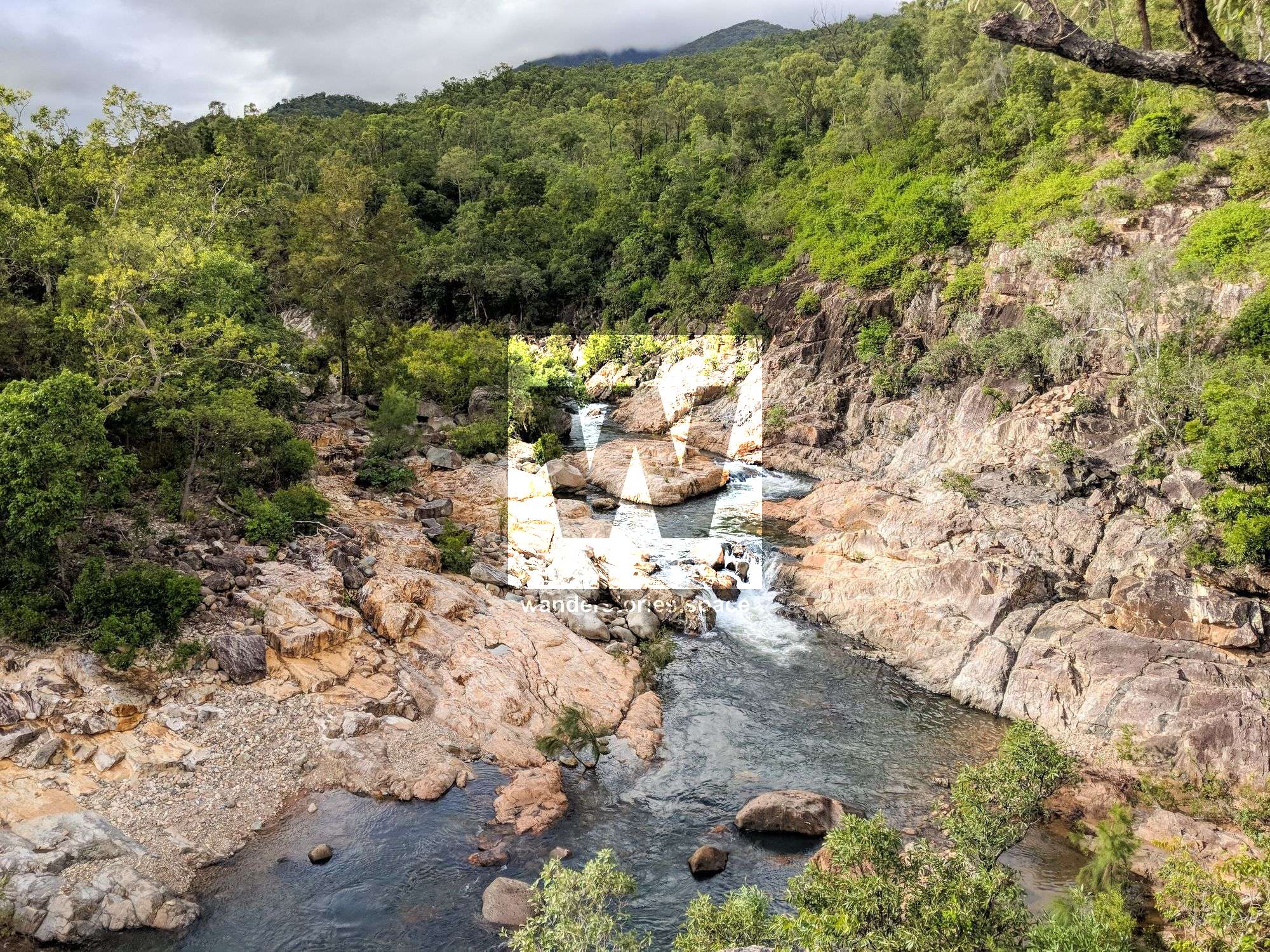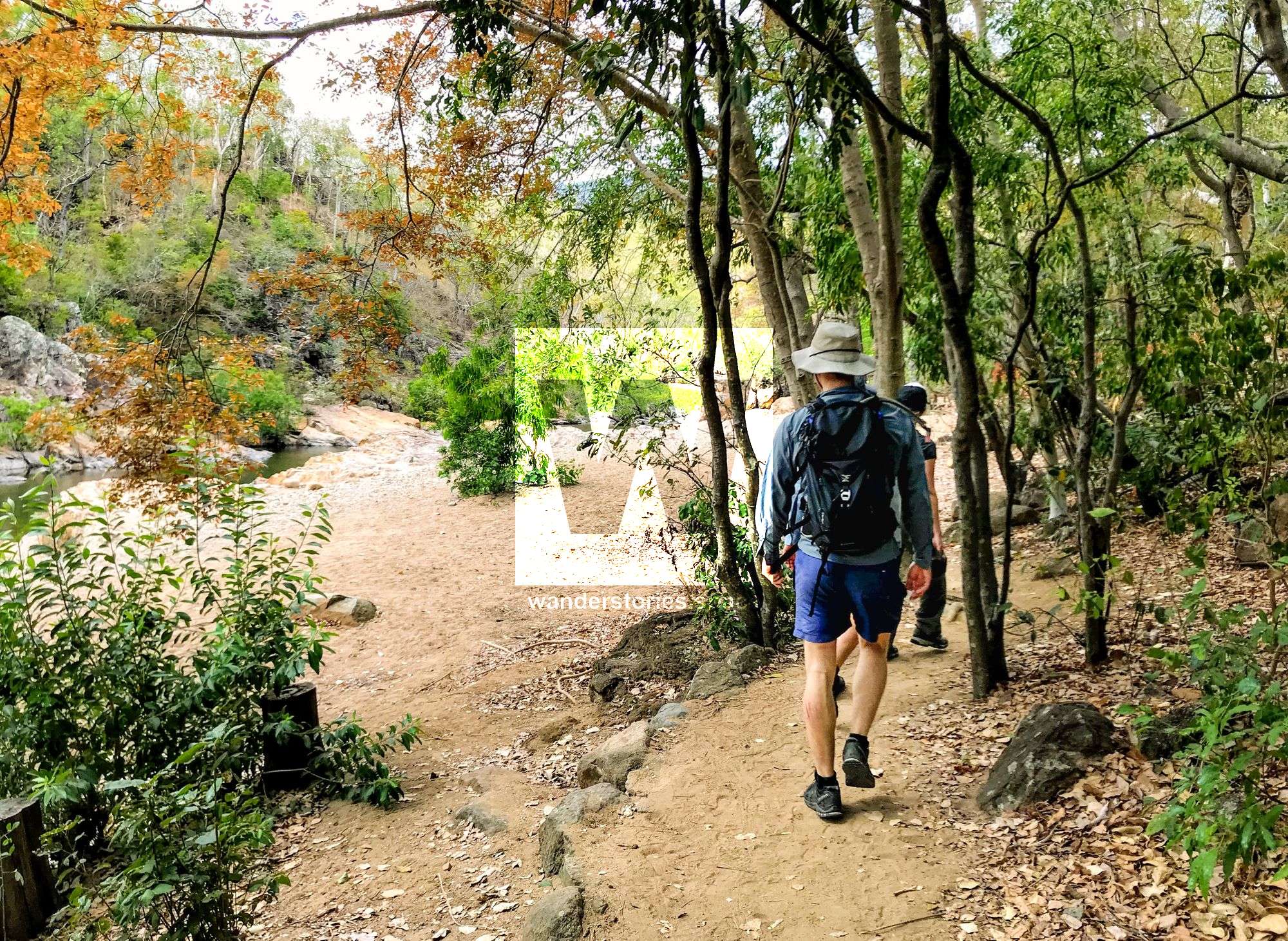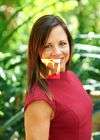Alligator Creek day-use area
The Alligator Creek area has something for all ages and fitness levels. If you only have an hour to spare, choose a short, easy walk. If you want to spend the whole day exploring, choose a more adventurous, extended hike. Enjoy the waterholes, swimming areas, and lookouts along the way.

Location - Bowling Green Bay National Park, Queensland, Australia
Distance - 100 metres
Duration - 1 minute
Grade - 2, easy
Approach - 28 km, 25 minutes south of Townsville
This is a fantastic day trip with something for all ages and fitness levels. The day-use area is easily accessible and provides access to the waterhole, swimming area, and the lookout, which is up the valley. If you only have an hour to spare, you can choose to take a short, easy walk. If you want to spend the whole day exploring, you can choose a more adventurous, extended hike. Indeed, the Alligator Creek area has something for everyone!

Alligator Creek Boardwalk and Swimming Area
Grade: 1, easy
Distance: 200 metres return
Time: allow 15 minutes, one way
Enjoy a shaded, wheelchair-accessible boardwalk through riparian forest along the creek line. It starts from the day-use area to the bank of Alligator Creek where the boardwalk ends, continue along the rocky and sandy path to arrive at the popular swimming area. Spot turtles sunning themselves on rocks in the creek and swim with the jungle perch in the swimming hole at the end of the track.
Alligator Creek Lookout
Grade: 1, easy
Distance: 1 km return
Time: allow 30 minutes, one way
Take your camera on this short stroll to the top of a rocky outcrop for a view of the lower sections of Alligator Creek. Follow the sealed path from the car park to the viewing platform, or use the steps from the swimming area.
Cockatoo Creek Track
Grade: 2, moderate
Distance: 3 km return
Time: allow 1.5 hours, one way
Wander through open, eucalypt woodlands, which slowly climbs to Cockatoo Creek. Filled with boulders and rock pools and fringed with bottlebrush trees, this creek is ideal for a refreshing swim and a relaxing break.
Alligator Falls Track
Grade: 3, difficult
Distance: 17 km return
Time: allow 4-6 hours, one way
The Alligator Falls trail traverses through the Bowling Green Bay National Park along the trail to Alligator Falls. Enjoy grassy, open woodlands, cool riparian forests, and views of the Alligator Falls cascades. Eucalypt woodlands cover the lower slopes of Mount Elliot and are filled with many interesting plants that you will see along the walk. The track to Alligator Falls starts from the southern end of the car park and continues on from Cockatoo Creek. You will venture through woodlands, wade across creeks, and encounter valleys along the way.
Note: As Bowling Green Bay National Park is a national park, pets are not allowed.
Interactive Map
Camping
There are several options to camp in this area:
- Alligator Creek camping area
- Cockatoo Creek camping area
- Alligator Falls camping area
- Mount Elliot remote bush camp
Covered picnic tables, gas barbecues, and wheelchair-accessible toilets are provided at the day use area. Alligator Creek campground has wheelchair-accessible toilets and 16 numbered campsites — some with wheelchair-accessible furniture. The Alligator Creek camping area allows for car camping as well, whereas, the other came sites are walk-in only. Regardless of the site, camping permits must be obtained in advance; book through the Queensland Parks website.
The Alligator Falls walk-in camping site is just off the track and is for self-sufficient campers only, with a maximum of six campers allowed. Cockatoo Creek is a short walk-in for self-sufficient camping and also takes a maximum of six campers.
Take rubbish (including food scraps) home with you. Bury human waste at least 15 cm deep and at least 100 metres from watercourses and tracks. Take care not to pollute freshwater. Do not use soap, shampoo, or detergents in or near creeks, streams, or waterholes.
Flora and fauna
From about 400 m and above in elevation, Mount Elliot supports rainforest that once stretched north to Mount Spec and south to Eungella. Isolated as a result of a drying climate, Mount Elliot is now evolving independently from other rainforests and is an important local refuge for wildlife supporting many endemics. Indeed, some species that live here are found nowhere else on the planet!
The Mount Elliot Nursery-frog, also known as the McDonald's frog, (Cophixalus mcdonaldi) is critically endangered and really quite interesting among all of the frogs, as it does not have an active tadpole life stage like most frogs. This tiny (~2cm as adults) frog gets its name because it lays a 'nursery' of eggs on the underside of leaves and moist soil in the rainforest. This is the only area on the planet where this species can be found.
The leaf-tailed gecko (Phyllurus amnicola) is another interesting find, as they are masters of camouflage, blending in nearly perfectly with the lichens within the rainforest. This reptile is often referred to by herpetologists as the 'keeper of the forest'.
Early morning is a great time for wildlife watching. As the sun rises, look for great bowerbirds as they swoop, searching for trinkets to adorn their bower.
Listen to the chorus of bird calls, and try to spot the kookaburras, flycatchers, scarlet and yellow honeyeaters, and cuckoo-shrikes that take part in the morning melody.
Watch the wallabies as they feed on the freshly mowed grass, or try to spot a turtle sunning itself on a rock in the creek before it splashes into the water.
During the heat of the day, activity slows, and most animals seek shelter and rest. Night time, however, is when nocturnal animals are most active. With a torch, look for brushtail possums and sugar gliders on trunks and branches, or see if you can spot a rufous bettong scurrying across the grass in the campground.
A rustle in the undergrowth may be a northern brown bandicoot searching for insect larvae in the soil. In the morning, look for the small conical holes that the bandicoots made as they were digging out their prey.
Kapoks (Cochlospermum gillivraei) are deciduous trees growing on the rocky hill-slopes beside Alligator Creek. They break out in brilliant, yellow flowers after the dormant winter months. Leaves then follow before the flowers form large seed pods that eventually split open. Once they split open, the pods reveal a mass of white, fluffy seeds. During the early settlement of Australia, these soft kapok seeds were used to stuff pillows and mattresses.
Cycads (Cycas media) are striking primitive plants. Clumps of cycads are often seen in the understory. Their leathery, fern-like leaves grow from the top of a thick trunk. The trunk is often black from past fires and is covered in a pattern of triangular leaf scars.
Climbing hibiscus (Abelmoschus moschatus – subspecies tuberosus) grows during the wet season (October to April) and has bright pink or red hibiscus-like flowers. The flowers last for only one day, but they are prolific and continue to appear until the wet season ends. These trailing ground cover plants survive through the winter utilising a dormant, underground tuber.
A freshwater crocodile lives in Alligator Creek. Unlike estuarine crocodiles, however, freshwater crocodiles are considered timid and not a great threat to humans. Very few incidents have been reported involving freshwater crocodiles and people. Although, it is important to note that this crocodile may become aggressive if disturbed.
This article, and all other articles, are for entertainment purposes only and are not to be used as a guide. Please see our Disclaimer for more information.

